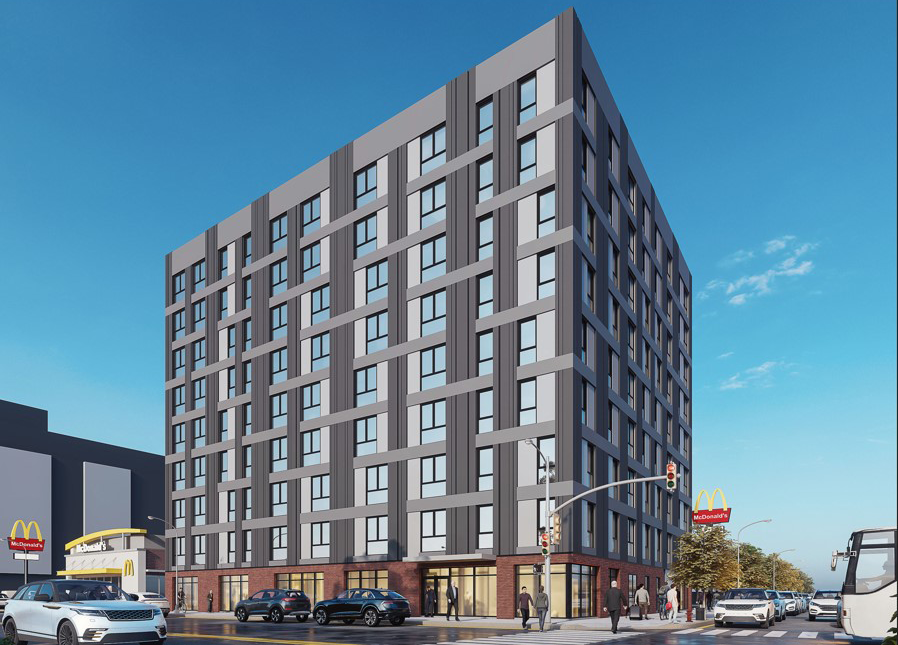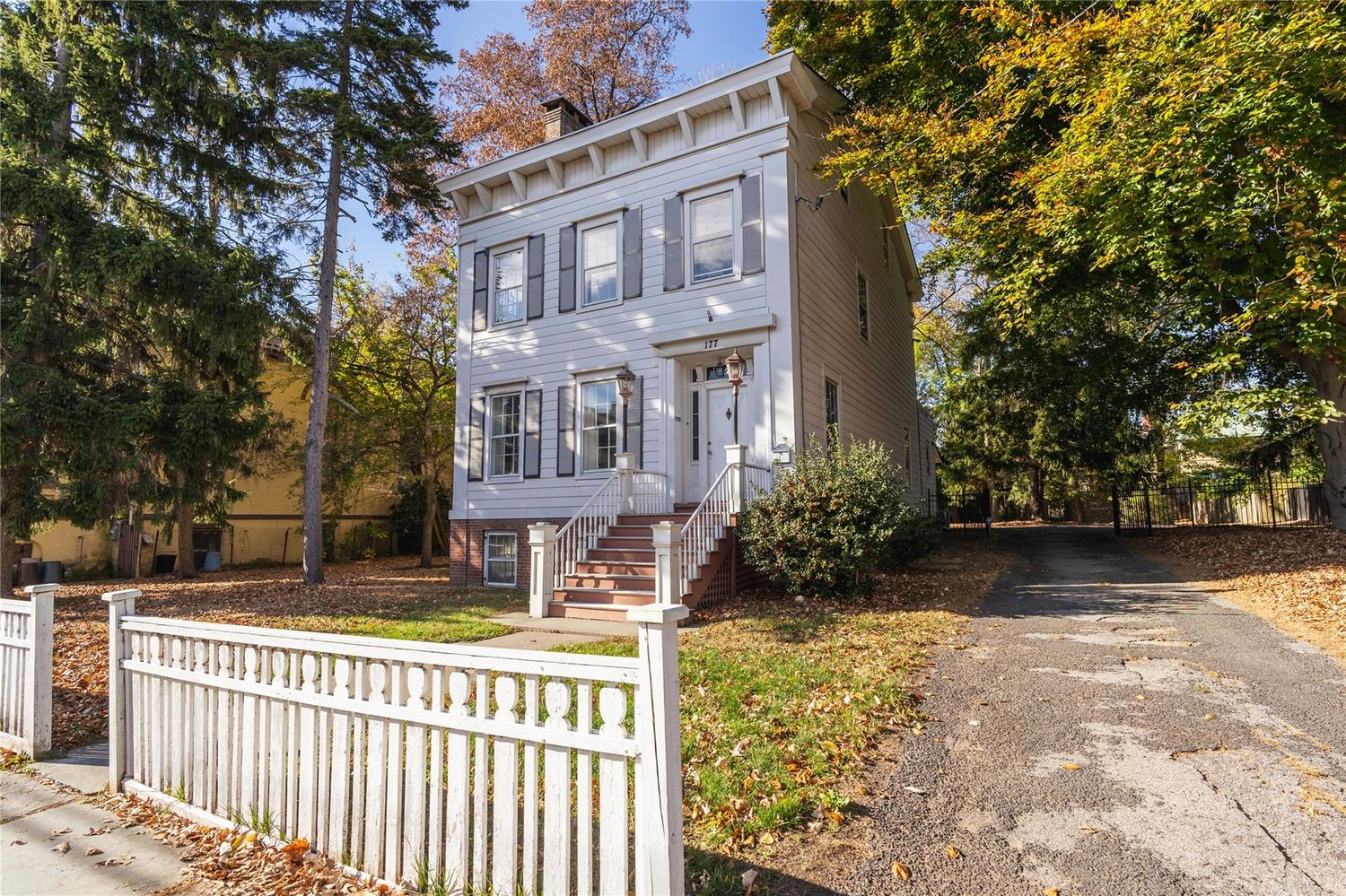Walkabout: Saving Bedford Stuyvesant, Part 1
Read Part 2, Part 3 and Part 4 of this story. The communities of Bedford and Stuyvesant Heights entered the 20th century as two of the most upscale and desirable communities in Brooklyn, famed for their superior architecture, central location, and fine civic and business establishments. Yet, as America struggled through the Great Depression, two…


Read Part 2, Part 3 and Part 4 of this story.
The communities of Bedford and Stuyvesant Heights entered the 20th century as two of the most upscale and desirable communities in Brooklyn, famed for their superior architecture, central location, and fine civic and business establishments.
Yet, as America struggled through the Great Depression, two wars, and the upheavals of the 1960s and ’70s, Bedford and Stuyvesant Heights, now joined as one community, became synonymous with crime, urban unrest and poverty. What happened?
Politicians, pundits and scholars talked, examined and studied, but talk is cheap. In 1966, two dedicated senators and a group of concerned business, civic and educational leaders decided to stop talking and start doing.
One of the politicians was a member of the most famous family in America, while the other was a hard-scrabble son of the Lower East Side. Joining them were Bed Stuy businessmen, educators, artists, architects and community members.
They would create the first community development corporation in America, called the Bedford Stuyvesant Restoration Corporation. This is the Restoration’s story.
Our story has to go back as far as the beginning of the 20th century. The popularity of these two central Brooklyn communities had led to fast and furious development, as block after block of row houses were built, ranging from the posh limestones of Stuyvesant Avenue, across the building spectrum to the modest brick and brownstone houses in ordered row-house blocks.
Unchecked real estate speculation switched from building single- or two-family row houses, to building tenements and flats buildings, which soon lined the cross streets and avenues, and wherever else row houses had not been built, many with stores on the ground floor, and apartments above.
These buildings were built as pure speculation, designed to house the waves of people moving to Brooklyn from Manhattan, escaping crowding and high prices, to more space, fresh air and new opportunities. They were often bought by absentee landlords who even back then, did little to keep up their conditions, but simply flipped them, over and over again, inflating prices each time.

By the 1920s, these speculators thought the demand would never end, as second-generation immigrants moved up and out of the Lower East Side and other immigrant enclaves. Wealthier black residents found themselves moving out of an overcrowded and expensive Harlem, which had already fallen victim to speculation and price gouging. From a real estate point of view, Brooklyn was hot!
But as we know from our own recent experiences, what goes up also falls, and even before the Great Depression speculators had driven prices so high that multiple-unit housing stock was already taking a cold plunge in the bath of reality.
Owners walked away from their buildings, leaving them unattended and uncared for. Unscrupulous landlords were saving some of the worst of their tenements for black renters, welcoming them with uncharacteristic bonhomie into the community, of course, for inflated prices in substandard housing. By the 1930s, at the same time newspapers began to refer to the area as Bedford Stuyvesant, the area was 11 percent black, with a large population of white ethnic residents, who were also the victims of prejudice and discrimination.
Services of all kinds — sewers, sanitation, police and fire departments — became less and less. The pairing of Bedford Stuyvesant with crime in the eyes of the press and public had begun.
All of this did not go unnoticed by the wealthier old time residents. In 1935, the all-white Bedford Home Owners Association petitioned federal, state and local officials to ask local banks to lower interest rates on mortgages in the area, to allow new buyers to come in and to prevent foreclosures, abandonment, and the subdivision of single family row houses into apartments and rooming houses.
They were totally ignored. If anything, the city services diminished even more. The wealthier white residents began their rapid exodus out of Bedford Stuyvesant. Meanwhile, the A train, aka the African Queen, provided a direct route between Harlem and Bed Stuy, starting in 1936, introducing Harlemites to the growing black community in central Brooklyn, and by 1940, this area was 30 percent black.
In the 1950s the United States relaxed immigration restrictions on Caribbean countries, and a huge population of West Indians, from mostly English-speaking countries, soon called Bedford Stuyvesant and central Brooklyn home. By 1957, 90 percent of Bedford Stuyvesant was black.
Now, contrary to popular belief, a black population did not mean everyone in Bedford Stuyvesant was poor. That is far from the truth — not back in the 1950s-’70s and not now. Most of the homeowners were middle-class folk, along with those of even more means.
These people bought the fine houses of Stuyvesant Avenue and surrounding blocks, and the grand homes of Bedford. They were civil servants, secretaries and clerks, real estate brokers, teachers, lawyers and doctors. Families bought houses together, and expanded into ownership of several houses on a single block.
West Indian families formed sou-sous and pooled their money to buy homes, often renting out rooms to boarders while buying more real estate. All of these homeowners bought with great difficulty and sacrifice, as every single major commercial bank in the city redlined central Brooklyn, refusing to hold mortgages in this area.
Buyers had to have large down payments, borrow from private lenders and mortgage brokers at inflated rates, and look for owners to take back mortgages. Only some local savings banks lent for local mortgages, the black-owned Carver Bank, among them. But they endured, with the results being that many of the homes of Bedford Stuyvesant have been in the same families for generations.
But there was still poverty — far too much poverty, shared by black, Hispanic and remaining white residents, as the 1960s began. Some of the already-crumbling apartment buildings became roach-infested hellholes, and poverty moved throughout the community.
Buildings became abandoned or burned out. Urban renewal projects were destroying blocks and blocks of row and tenement houses, replacing them with large high-rise housing projects, home to thousands of people. Businesses and manufacturing left, taking those jobs with them.
One of the largest employers of the Bedford Stuyvesant area was Sheffield Bottlers, which bottled and distributed milk products throughout the city, one of New York’s big three milk producers that shared a near monopoly in city milk production and distribution.
This factory, built in 1915, was on Fulton Street, between Marcy and Tompkins avenues, centrally located only a block from the subway, and near several bus lines, and the Nostrand Avenue LIRR station. When it closed down in the early ’60s, the community lost more than 2,000 local jobs. Stores and other businesses fled as well, leaving once-busy Fulton Street a ghost of its former self.
The ongoing Civil Rights Movement gave rise to a spirit of committed community activism, prompting leaders of the Bedford Stuyvesant community to ask for some much needed federal, state and local help in stopping the decline of the community; to bring it, and the people back.
On February 6, 1966, Senator Robert F. Kennedy, along with community leaders and residents, took a historic walking tour of Bedford Stuyvesant. Kennedy was appalled by the general state of the neighborhood — its boarded up storefronts, deteriorating housing, and the social conditions of the poorest of the poor, with high rates of infant mortality, juvenile delinquency, and unemployment. He left, vowing to do something about it, and he actually did.
Along with Jacob Javits, his Republican fellow senator from New York, Kennedy sponsored legislation for a bipartisan federal program called the Special Impact Program, as part of the Economic Opportunity Act of 1964.
The program would provide funds for the newly formed Bedford Stuyvesant Renewal and Rehabilitation Corporation, which would be subdivided into two corporations. The first, the Bedford Stuyvesant Restoration Corporation (BSRC), would be a nonprofit group directed by 26 members, nicknamed the Community Board. It was made up of ministers, lawyers, other professionals and community activists.
Their job was to draft plans for housing, health clinics, recreational facilities, and commercial and industrial development. The second group, the Development and Services Corporation (D&S) included mostly Manhattan-based professionals and business leaders, led by an 11-member board. They were established to work in partnership with the BSRC by implementing their vision, offering expert help and attracting private investment for projects within the Bed Stuy community.
How did that all work out? Well, not badly, with some great successes, but not without some controversy and criticism, either. Read on to Part 2 to judge for yourself.
Related Stories
Suzanne Spellen, aka Montrose Morris, Is Writing Brownstoner’s First Book
Saving Bedford Stuyvesant, Part 2
Saving Bedford Stuyvesant, Part 3
Email tips@brownstoner.com with further comments, questions or tips. Follow Brownstoner on Twitter and Instagram, and like us on Facebook.
[sc:mailchimp-books ]








Great article (as always!) can’t wait for the next one!
How about a lecture series? We can have it at Commodore’s house.
Thanks, Montrose, for this nice surprise. If you need any further research you might want to talk to my friend and neighbor Mrs Head who has been very involved with the Restoration since its inception. She even says she played tennis with Ethel Kennedy, so who knows.
Anyway, if you decide to teach the BedStuy101 course you speak of, sign me up!
Run Joe, you are right, I left out the riots and a lot of other stuff, in trying to get the story told as tightly as possible. I’ll touch on them on Thurs. The history of BS is long and complex, and could be taught as a college course in of itself.
Yes, poor Eastern European Jews, as well as Poles, Italians and Irish residents, especially in the northern and far eastern part of Bed Stuy. Of course, that too is a generalization, as people were scattered around the huge confines of the neighborhood. My aunt, who grew up on Madison St, and also Myrtle Ave, remembers a polyglot neighborhood of many nationalities and languages. That was in the 1940’s and ’50’s, by which time there were also a lot of Spanish speaking people as well.
Thanks rob, and everyone else. I hope to be able to tell the story well, and Restoration is only one part of that story.
awesome write up. learned a LOT 🙂
*rob*
Absolutely fabulous work MM.
Fascinating, I never knew about all the original price gouging and real estate flipping that occurred at the onset of Bed-Stuy’s development. Looks like Bed-Stuy has always been trying to fight off brokers and speculators.
Anyway, great writeup!
Great stuff. Eagerly anticipating Part II.
very interesting, thanks for the history.